Why the RBA did not surprise with "shock" 25bps hike
For regular readers of our work or those who listened to the most recent, unscripted Complexity Premia podcast episode, the RBA's "shock" 25bps hike of its target cash rate from 3.60% to 3.85% in May would not have come as a surprise: we have relentlessly warned of the risks of a second hiking cycle and made the point that RBA pauses are commonly followed by rate rises, as repeatedly occurred in the preceding two cycles between 2002 and 2008 and 2009 and 2010 (see slide below). Indeed, the RBA framed its April pause as precisely that: a breather between hikes, as had occurred in the past. It is just that nobody really listened, which is not surprising given the RBA has been characteristically inconsistent, flip-flopping from dovish to hawkish vibes on a month-to-month basis.
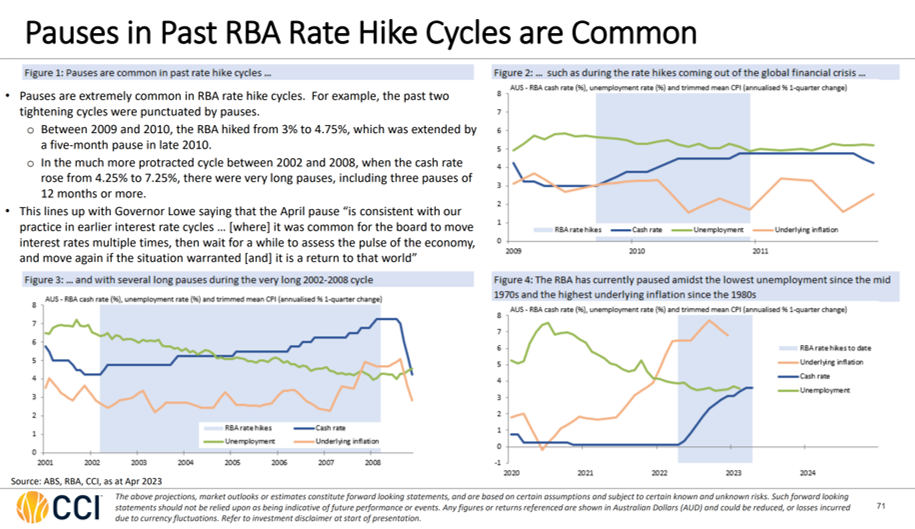
For some time, we have asserted that Australia is suffering from a demand-driven "services" inflation problem notwithstanding that supply-side "goods" inflation has started to normalise. Our chief macro strategist, Kieran Davies, has regularly presented analysis decomposing US and Australian inflation, which demonstrates that inflation has become a demand-side phenomenon care of excessively stimulatory fiscal and monetary policy (see first slide below). His research has also quantified the fact that Aussie consumers have accumulated large cash buffers worth 20% of their annual incomes that creates a new source of unwelcome latent demand-side pressures that could result in an elongated hiking cycle (see second slide below).
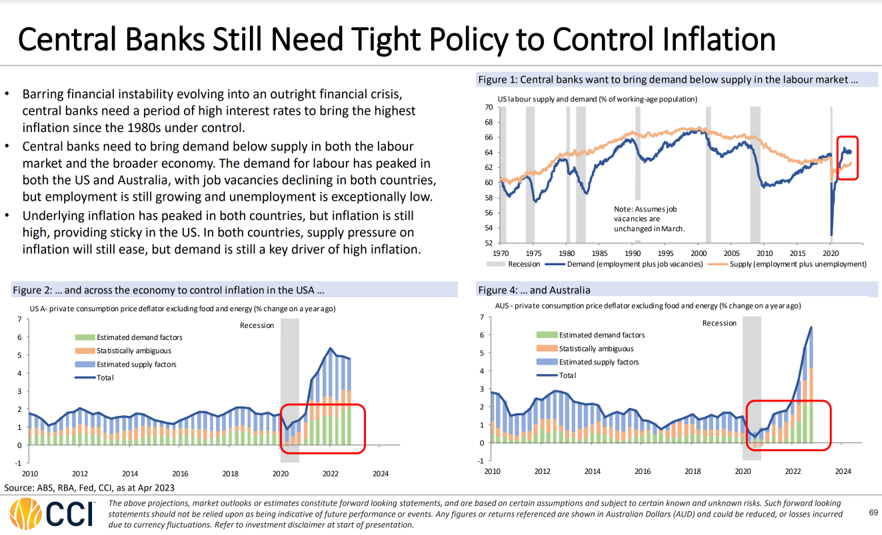
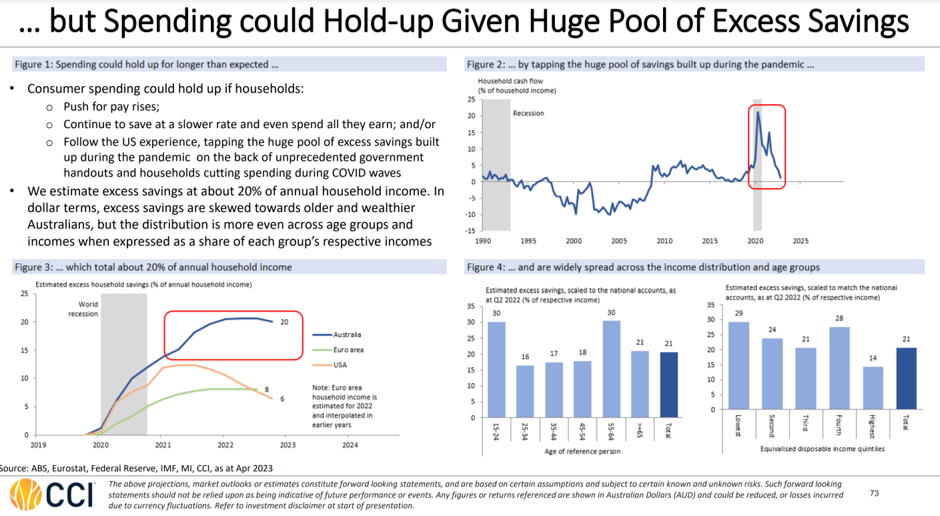
All the factors we have of late cited as rationalising a second hiking cycle were rolled-out by the RBA's governor Phil Lowe in his speech in Perth last night following the RBA's board meeting on Tuesday. These included:
- A stubbornly strong labour market accentuated by a 3.5% jobless rate that is miles below the RBA's estimate of "full employment" around 5% (below this level you get wage pressure), which is in turn driving wage growth (and specifically unit labour cost growth) that is not compatible with the RBA's 2-3% inflation target given the current weak labour productivity (doubtless partly explained by those lazy millennials!). Pointedly, this wage/productivity/inflation nexus is not going to be helped by calls for CPI-linked pay increases,
- A strong and sticky global inflation pulse in 2023, which does not engender confidence that core inflation will normalise back to the central banks' legislated 2% or 2.5% targets anytime soon (last week we noted that on a three month annualised basis, core inflation in the US and Australia had been running at 4.8% and 4.9% in the first quarter of 2023, respectively, which is obviously way above target),
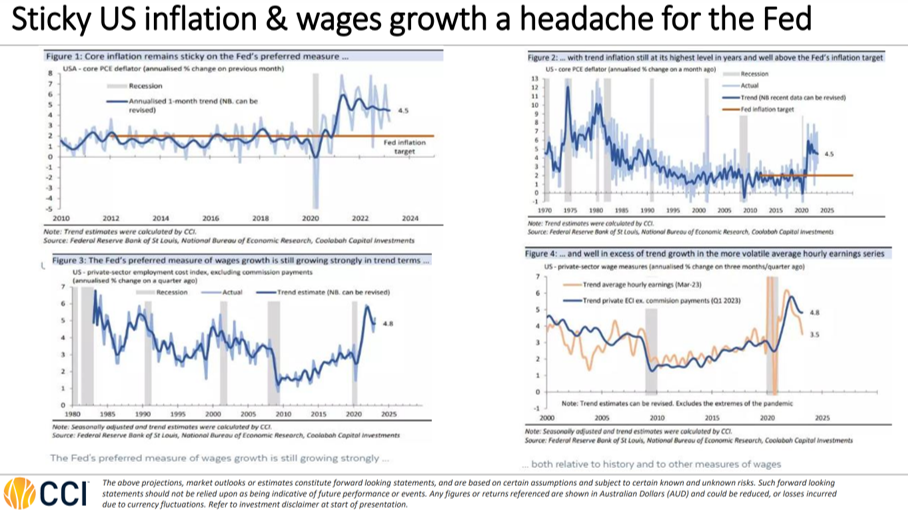
- The rise of demand-driven "services" inflation, which we showed had accelerated to 6% in the US and 8% in Australia on a six month annualised basis while noting that supply-side goods inflation had slumped from 12% to 0% in the US and from 12% to 5.5% in Australia as supply-chains normalise. This stubborn services inflation implies policy has more heavy-lifting to do,
- And, crucially, a surprising (dead cat?) bounce in asset prices and, in particular, Aussie house prices, which is explained by (1) banks discounting interest rates in competition for mortgage market share (effectively reversing RBA policy), (2) a record boom in immigration that we have foreshadowed since July 2021 given Australia's acute labour shortages and history of running the strongest population growth in the OECD on the back of a super strong migrant intake, and (3) strong seasonality in Aussie house prices between February and May that typically sees them climb. In this episode, it has really been a Sydney and Perth story, although the price falls in all cities have suddenly stopped. This would worry the RBA because it does not want to see a new positive wealth effect driving even higher consumer spending---tighter monetary policy is meant to be powering a negative, not positive, wealth effect. (Note that we have not adjusted our October 2021 forecast for a 15-25% peak-to-trough decline in Aussie house prices.)
What does this mean for investors?
This really reinforces our key messages that we are entering a new regime where interest rates are likely to remain high for a long time. This will probably perpetuate a US, European and global recession, which will in turn trigger a very large default cycle in the risky high-yield and private loan debt markets (see first slide below). It reiterates the point that one should avoid the reflex to buy perceived dips, which will likely prove to be dead cat bounces. On our modelling, US equities remain extremely expensive (see second slide below) both in historical terms and accounting for the high US inflation pulse. The S&P500's cyclically-adjusted price/earnings multiple of 29-30 times is way above its long-term average of 16-17 times, and the circa 10 times level expected with core inflation running at 5%.
Prudent investors will be in cash and historically cheap, high-grade government and bank bonds with strong liquidity properties that are paying exceptionally attractive yields right now. The major banks' senior-ranking bonds are offering interest rates close to 5% at present while their Tier 2 bonds pay interest rates of circa 6% pa, if not more. With term deposits paying 4-5% pa and bank bonds offering 5-6% pa, the 4% gross yield on residential investment property, 4-5% yield on A-grade commercial property, and 6% fully-franked dividend yield on Aussie equities appears extremely unattractive right now despite what many folks will tell you.
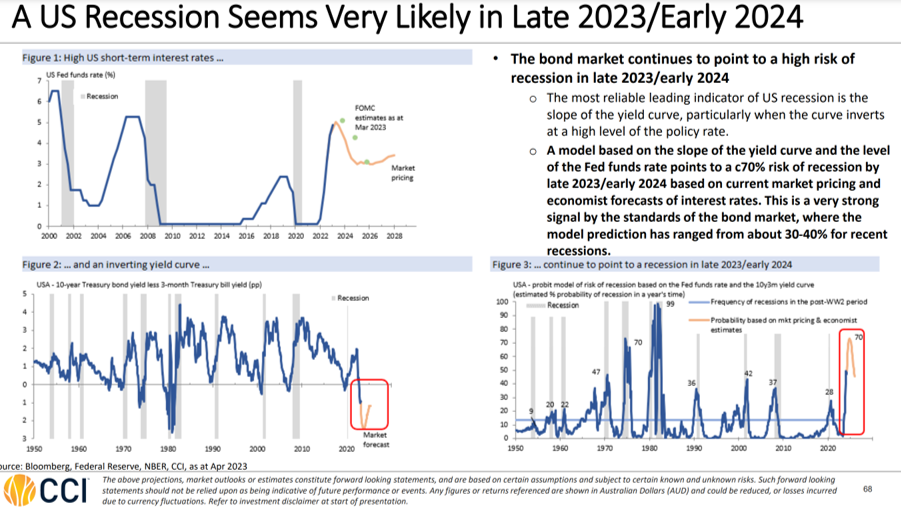
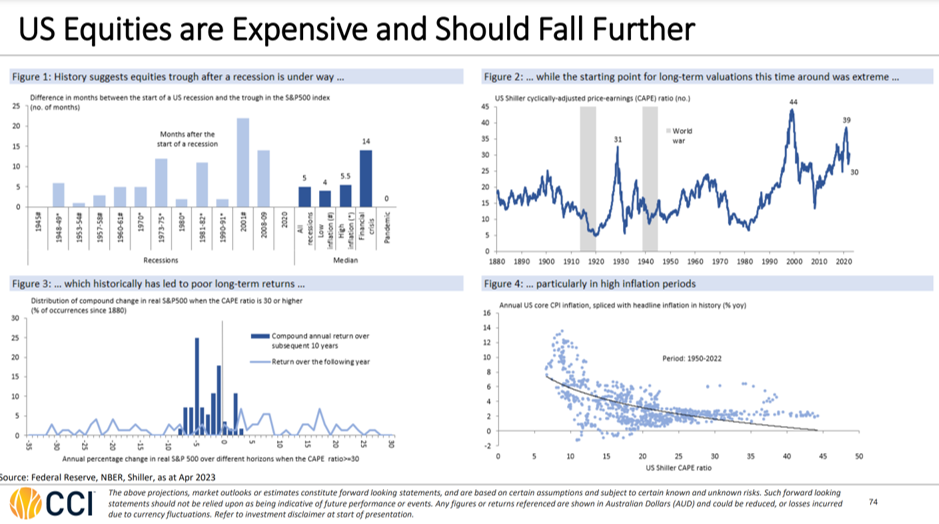
3 topics

